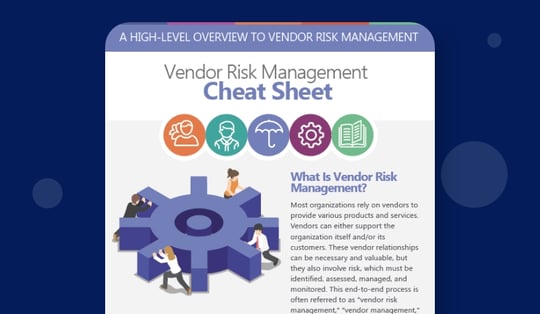As hospitals grow more dependent on external third parties to provide products and services, the need for vendor risk management increases exponentially. While outsourcing is an acceptable and widely used business strategy, it’s essential to realize that third-party vendors frequently access hospital data, facilities and patients.
When it comes to third parties, the risks are significant. The regulatory, legal, financial and reputational impacts can be devastating if a third-party vendor fails to meet compliance requirements, disregards safety standards or mismanages patient data.
Vendor Risk Management Challenges in Healthcare
Healthcare organizations have been hit hard by cybersecurity and data breaches in recent years, and those breaches are costly. According to the Ponemon Institute, in 2021, the average cost of a healthcare data breach reached an average of $9.23 million. The average hospital has more than 1,300 vendors, many of which have the potential to do severe damage to your operations, your patients and your reputation. While cybersecurity protection and patient privacy are top of mind for everyone, virtually every clinical process has inherent patient safety risks.
- Emergency preparedness
- Medical device cleaning
- Disinfection and sterilization
- Lab management and testing
- Pharmaceutical storage and distribution.
More importantly, when it comes to vendor-provided health and medical services, insufficient or failed delivery can decrease the quality of patient care, jeopardize patient health or even result in loss of life.
Still, many organizations solely focus on HIPAA compliance, which isn’t an adequate substitute for actual vendor risk management. So, why are healthcare organizations still hesitant to commit to more comprehensive vendor risk management practices?
A primary challenge is that many hospitals tend to be siloed regarding non-patient care functions. Vendor selection is usually the responsibility of purchasing or procurement and IT departments are on point for cybersecurity and HIPAA compliance. For many organizations, when it comes down to the actual practice of vendor risk management, there is a common misconception that HIPAA compliance is vendor management.
None of this is surprising. While vendor risk management has been a concern for many years in the financial sector, it’s relatively new to healthcare. Could it be that many organizations have a hard time understanding vendor risk management beyond pure HIPAA compliance without clear standards and best practices?
How to Use a Proactive Care Model to Manage Vendor Risks
The good news is that the healthcare industry already has an emerging practice that can serve as an excellent blueprint for reducing vendor risks, lowering costs and having better outcomes for the organization and its patients – it's called proactive care.
Proactive care is the emerging medical practice of working directly with patients to assess their baseline health, identify health risk factors and incorporate preventative measures into their daily lives to delay or prevent serious illness or disease. Regular checkups and monitoring are also part of the proactive care routine. This approach ensures earlier identification of any issues or symptoms should they occur, enabling timely intervention or treatment to prevent life-threatening emergencies. Hospitals and healthcare practitioners realize that this approach lowers the cost of healthcare, enables better outcomes for the patients and improves the ability to save lives.
Proactive care plans represent a monumental shift from traditional reactive medicine where issues weren’t diagnosed until patients' conditions reached critical stages. The lack of prevention in reactive medicine frequently results in the need for aggressive and costly treatments that, in many cases, may prove ineffective against advanced disease or illness. Coincidently, the proactive care model provides an excellent analogy for vendor risk management.
While vendors and patients aren’t the same, proactive care and vendor risk management share the same guiding principles:
- Identification of risk factors
- Incorporation of preventative and mitigating measures
- Continuous monitoring for issues and emerging risk symptoms
When performed consistently, these activities result in more effective risk management, lower costs, and better outcomes for the healthcare organization and its patients.
Here’s a more detailed view of some key vendor risk management activities:
- Vendor risk assessment: Vendor risk management begins with a baseline risk assessment of every vendor. The products and services provided determine the range of potential risk factors to be addressed.
- Due diligence: This process is utilized to confirm the vendor understands and applies appropriate preventative measures to manage their existing risks.
- Ongoing monitoring: Regular performance monitoring and vendor risk checkups allow the opportunity to examine for underlying symptoms of new or emerging risks.
It’s important to remember that vendor risk management covers the entire population of vendors, not just those covered under HIPAA. As a result, risk identification and handling isn’t limited to only the vendors that access patient data.
Beyond providing quality care for their patients, hospitals and healthcare organizations are faced with many regulatory, financial and administrative responsibilities. Vendor risk management is no exception. The old adage, "An ounce of prevention is worth a pound of cure" not only applies to health and medicine these days, but to vendor risk management as well.

















